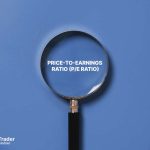[prəˈdjuːsə(r) praɪs ˈɪndeks]
The Producer Price Index (PPI) is a measure of the average change over time in the selling prices received by domestic producers for their goods and services.
What is Producer Price Index (PPI)?
The Producer Price Index (PPI) is an economic metric that tracks the average fluctuation in the prices that domestic producers receive for the goods and services they offer over a certain period of time. It measures the changes in the prices received by producers before the goods and services reach the final consumers.
The PPI typically includes various categories of goods and services, such as raw materials, intermediate goods, and finished goods, that are representative of the production sector of the economy.
This index is often used as an indicator of inflationary pressures and is published regularly by national statistical agencies. It is commonly utilized by policymakers, businesses, and investors to monitor inflation trends, identify supply and demand imbalances, and make informed decisions about pricing and production strategies.
Key Takeaways
- The PPI measures the average change over time in the selling prices received by domestic producers for their goods and services.
- It includes various categories of goods and services that are representative of the production sector of the economy, such as raw materials, intermediate goods, and finished goods.
- The PPI is published regularly by national statistical agencies and is often used as a leading indicator of inflationary pressures in the economy.
- The index is utilized by businesses, policymakers, and investors to monitor inflation trends, identify potential supply and demand imbalances, and make informed decisions regarding pricing and production strategies.
- Changes in producer prices can ultimately affect consumer prices, making the PPI an important metric for understanding the overall health and performance of the economy.
Example of Producer Price Index (PPI)
The PPI for a particular industry, such as the construction industry, increased by 2% over the previous month. This means that, on average, the selling prices received by domestic producers in the construction industry have increased by 2% compared to the previous month.
This increase in the PPI for construction could be due to a variety of factors, such as an increase in the cost of raw materials, higher labor costs, or increased demand for construction services. This increase in the PPI for construction could also indicate that inflationary pressures are building in the economy, as the higher producer prices may eventually be passed on to consumers in the form of higher prices for new homes and buildings.
Policymakers and investors may use this information to adjust their strategies accordingly. For example, if policymakers are concerned about rising inflation, they may choose to tighten monetary policy to slow down the economy and reduce inflationary pressures. Similarly, investors may choose to adjust their portfolios to reflect the changing economic conditions, such as by investing in companies that are less sensitive to inflationary pressures or by hedging their investments against potential inflation.
Back to Glossary.




